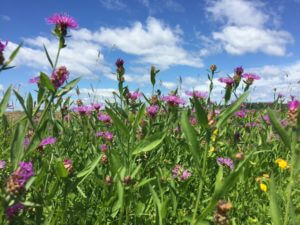Trees and trails on State Park Road

If the Town of Charlotte wants new trails, some trees will need to be removed. How can we build our trails so that tree cover is preserved as much as possible? What’s an acceptable level of tree removal, and at what point do we decide that trees are more important than trails? There are no clear answers to these questions, but we can start by taking a closer look at the plan for building a trail along the north side of State Park Road that would connect the Melissa and Trevor Mack Trail, which runs north at the Route 7 end of the road, to Mount Philo State Park.
The Charlotte Selectboard asked your Tree Warden to conduct a preliminary assessment of trees that would need to be removed to accommodate an eight-foot wide trail that starts four feet from the edge of the road and includes a two-foot recovery zone (14fourteen feet total from road edge). From the Mack Trail to the east end of the road there are approximately 47 trees that would need to be removed, including individual stems of multi-stem trees and close clusters.
Some of these trees are not a concern because they are dead, dying, malformed, suppressed or, in the case of the elms and ash trees, expected to succumb to Dutch elm disease or the emerald ash borer. After eliminating from consideration these trees of lesser concern, there are 14 trees that might be considered significant: three basswoods, one box elder, four burr oaks, two red cedars, one sugar maple, two white pines and one willow. In some instances the vacant space left by removing one tree would be quickly filled by nearby smaller trees that had struggled to grow in its shadetrees that were competing with it. In other instances tree removal would create a gap, and the landscape would be adversely affected.
In addition, trees that are in close proximity to the suggested path are at risk from construction-related soil compaction and damage to root systems. Changes to grades and drainage patterns within the root zones of these neighboring trees are additional risk factors. As a consequence, the total number of trees that would ultimately be lost could be significantly higher than those initially removed to clear the way. The degree of impact depends on the final siting of the path, construction design, and mitigation measures.
My current recommendation to the Selectboard, therefore, is to identify a trail site different from the one immediately adjacent to the road that I was asked to assess. Instead of creating a straight connection between Mount Philo State Park and the Mack Trail, the town could pursue a site that preserves as many of the significant roadside trees as possible. A path that is mostly away from the roadside and meanders around important trees could be interesting and attractive. Indeed, this seems like a real possibility and was envisioned in Dubois and King’s “Charlotte Bicycle and Pedestrian Scoping Study” as a variant of the straight-path option.
The town has the required easement rights, or could acquire them, on much of the adjacent property for an alternative path outside the town right of way. Of course, even this path would require the removal of some trees, but the effect of their loss on the view shed and roadside canopy would be minimal.
Assuming that an alternative, low-to-moderate impact path that winds in and out of a tree line can be identified, it seems to me that the town’s interest in having the trail would outweigh its interest in preserving the trees that would have to be removed and those that would be placed at risk. Such a path is likely to be supported by the Tree Warden.
My current conclusion and advice to the Selectboard are based on a preliminary assessment only. No tree removals are authorized at this stage. Before that happens there would need to be, in addition to a more thorough impact assessment, a public hearing as required by State of Vermont statutes regarding Tree Wardens.

